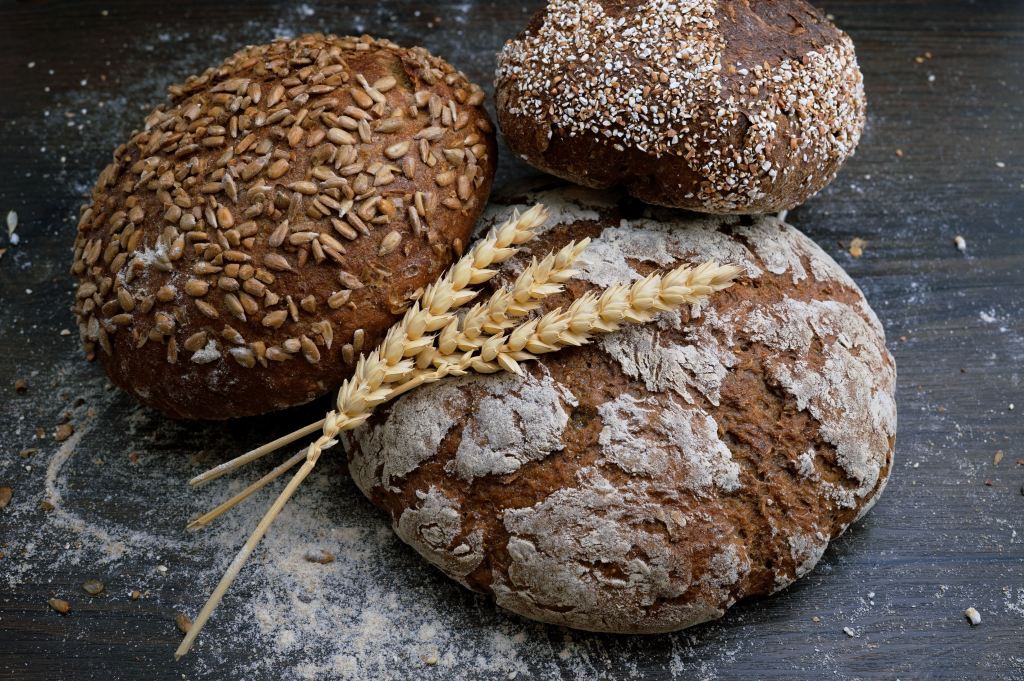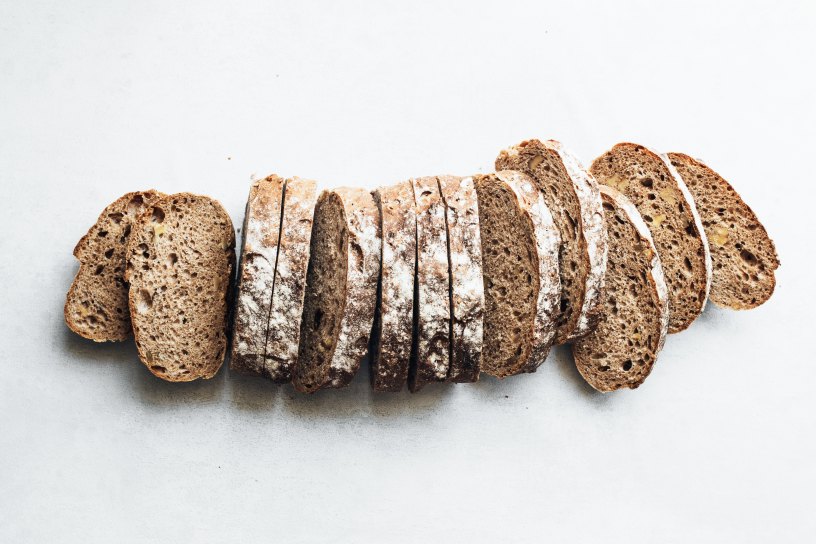Can you guess what the most widely consumed food in the world is? The Bible refers to it as the “staff of life”, and it’s been consumed by humans since the Neolithic era. Many a riot has been waged over its rising prices and it was even the first meal consumed on the moon…
You got it! Bread.
Bread gets a bad rap.
In spite of its glory, bread has suffered through the ‘low carb’ 90s, millennial breadbasket shunning, and recent Paleo-diet villainizing. Coupled with a growing fear of gluten intolerance and its ugly cousin, celiac disease, glutinous grains have garnered a complicated reputation with the health-conscious*.
Celiac aside, many people who can’t touch a crumb in the United States find bread abroad surprisingly easier to digest. Weird, right? Doctors and scientists have theorized that U.S. farmers favor wheat that’s been hybridized to contain a higher gluten content because of its resilience. Meanwhile, American companies are sneaking this super gluten into more and more processed foods.
So how are the gluten-sensitive on this side of the Atlantic supposed to enjoy this ‘staff of life’? (We’re pretty sure that adorable Parisian Boulangerie you saw on Instagram doesn’t use FedEx.)

Sprouted grains are alive.
Sprouted grains are nutritionally superior to their dormant counterparts. Sprouting the likes of wheat, rye, or teff will partially break down the seed’s starch, effectively lowering its carb quota. ‘Low carb’ plus ‘high fiber’ gives sprouted grains a lower glycemic index than 12-grain, sourdough, and white bread, making it a smart choice for people with high blood sugar or diabetes. Combining sprouted grains with legumes makes a complete protein, packing a powerful punch with all 9 essential amino acids.
They’re easier to digest (and can solve your gluten woes).
Sprouting a grain activates enzymes that break down its proteins and carbs, reducing gluten content by up to 47% in some cases (making many glutinous grains far more tolerable for those who are gluten sensitive). This also renders all its vitamins and minerals more readily accessible. Remember that grains are seeds, designed to pass through any predator that would eat them to make a full journey back to the earth and grow. They don’t want to be broken down. By jumpstarting their growth before consuming, you subvert the plant’s plan to use your body as a highway and you get to reap the full nutritional benefits of the world’s most popular foodstuff.

They make a killer baked good.
Are you ready to get your Alice Waters on? Grab your wheat berries, amaranth, barley, farro, sorghum, and spelt and get to sprouting! Going full gluten-free? Quinoa and rice can also be sprouted and whipped into baked-goodness. To reap the full benefits, make sure your grains are whole, with germ and bran intact — not hulled, husked, pearled, rolled or flaked. So pick your favorite and let’s get into the nitty-gritty:
- Sprout the grain as you would any other seed: until it has a ¼” tail (1-5 days)
- Dry the grains in a dehydrator (if you have it) or with sheet pans (if you don’t). For the pans: spread the seeds in an even, thin layer and cover with cheesecloth, checking on the seeds periodically. They’ll be fully dry in 18-48 hours depending on the humidity of where you live. Tempted to toss them in the hot oven? The high temperature will kill the active enzymes, negating a lot of your seed’s gut-friendly properties.
- Grind the fully dried seeds into a fine flour using a grain mill (ideal) or a coffee grinder (totally doable in small batches). Whatever you don’t whip up that day is good for ages in the refrigerator or freezer, and making a big batch is a real time saver.
You can use your new sprouted flour in recipes as an even 1:1 substitute. Enzyme activation occurs during sprouting, so bread dough needs less time to ferment (bonus!). Sprouted grain flour is praised for its flavor and lighter, finer texture that results in a soft, crumbly bread. This makes it a wonder for quick breads, cookies, pie crusts, and scones, to name a few. You can buy sprouted flour at your local health food store, but a little time and care will have you turning your nose up at expensive processed substitutes.
So start your sprouting and get back to your bad, bread-loving self.
*Celiac is an inherited autoimmune disorder, not to be confused with gluten intolerance or taken lightly. If you have it, you know it, and sadly no amount of sprouting will make glutinous grains safe for your system.


Hi guys!
This never occurred to me before, but it should have. I have a couple of questions. First, can I sprout wheat berries in my hemp bags? Would one cup of wheat sprout/fit in one bag? Approximately how long should it take for them to sprout from berry to 1/4 inch tail? Two days with twice a day dunking? From what I’ve found online it seems that 2 C of wheat berries (sprouted/dried) would grind out to approx 3 C of flour, give or take. I’m excited to try this out! Thanks for the info.
LikeLike
Happy to hear you’re excited to try this! Yes, one cup (perhaps more!) will fit just fine in the Sprout Bag, and two days sounds about right; just do exactly what you suggest, and monitor the progress.
LikeLike